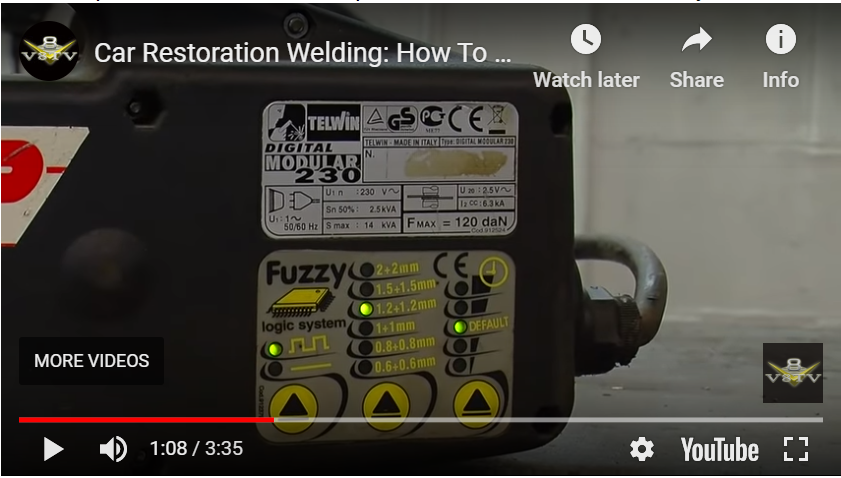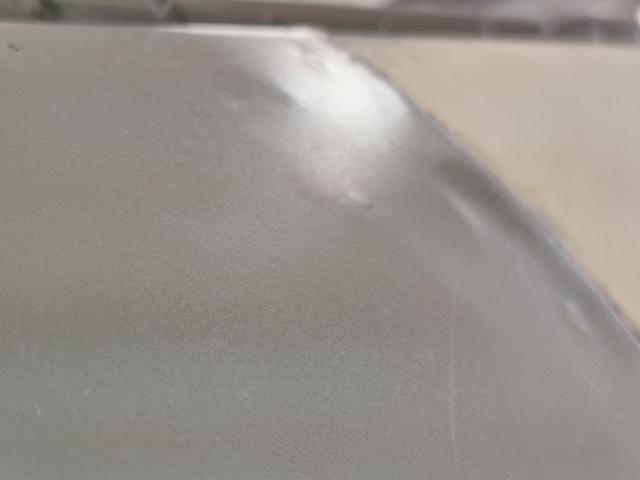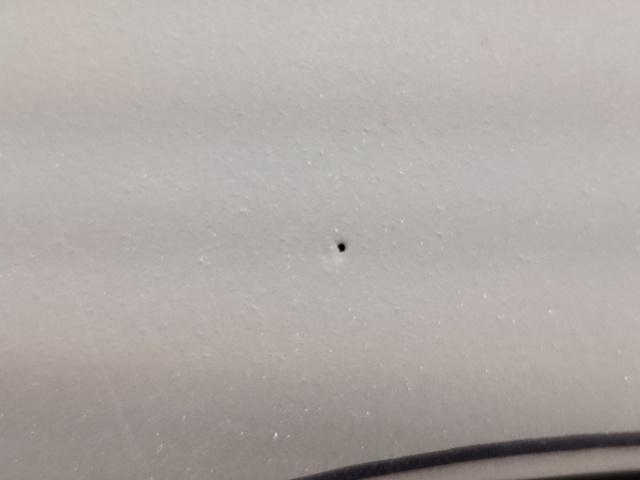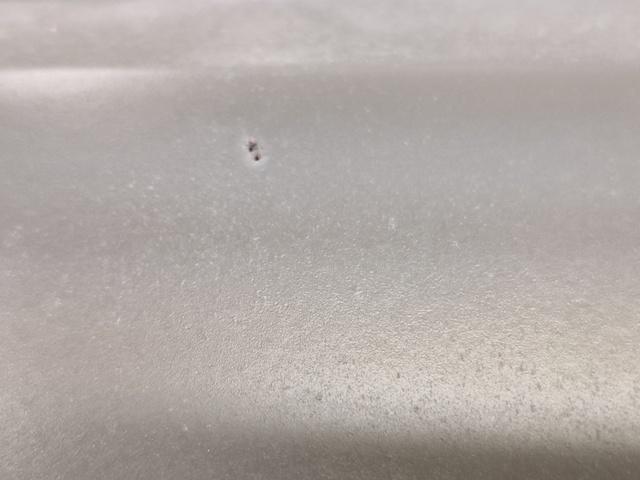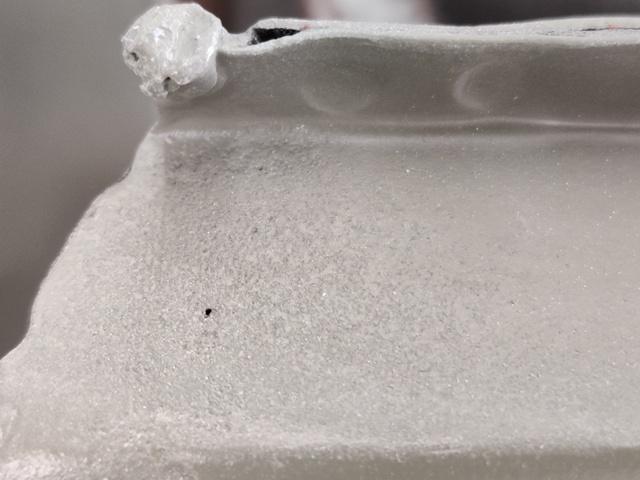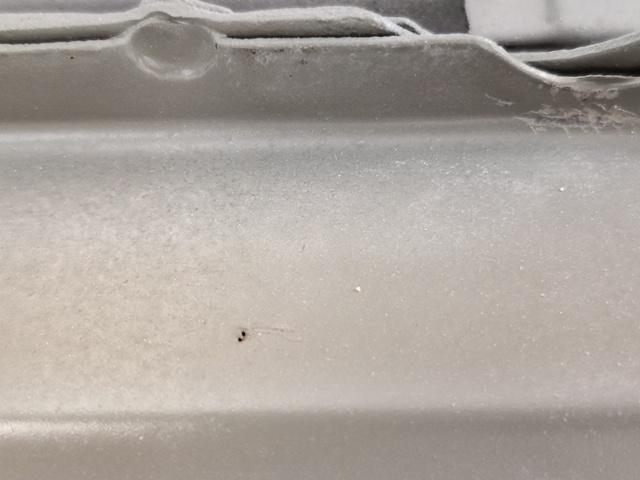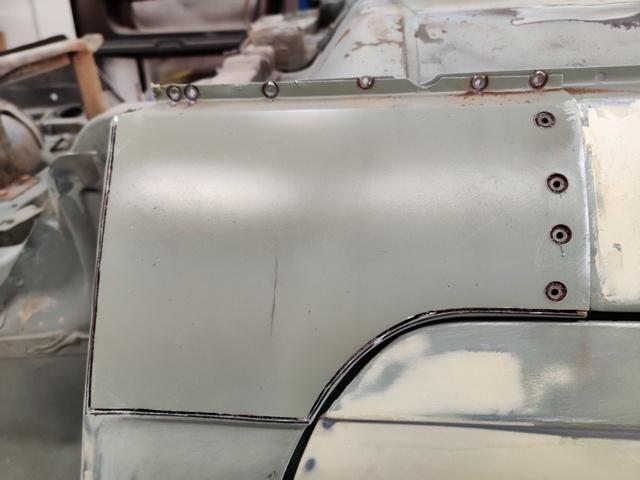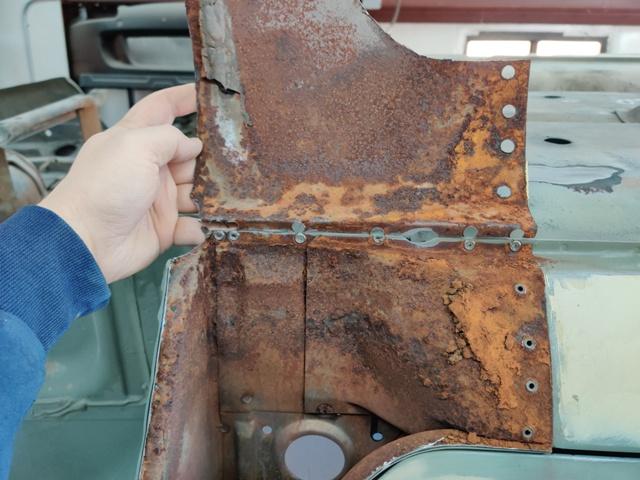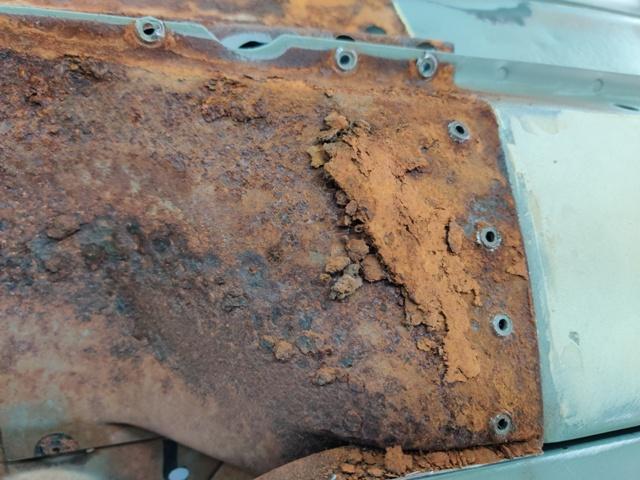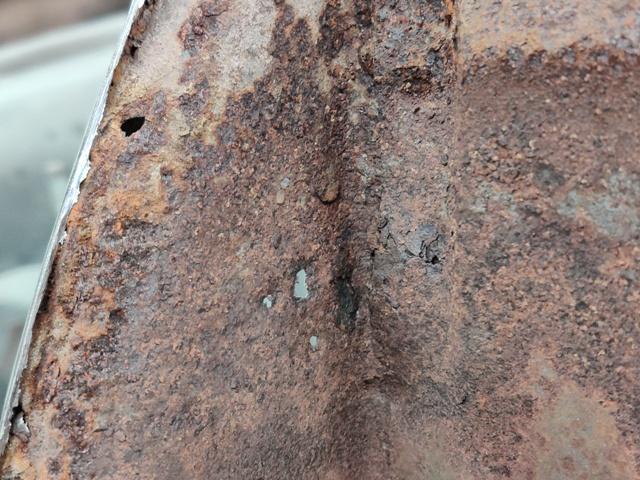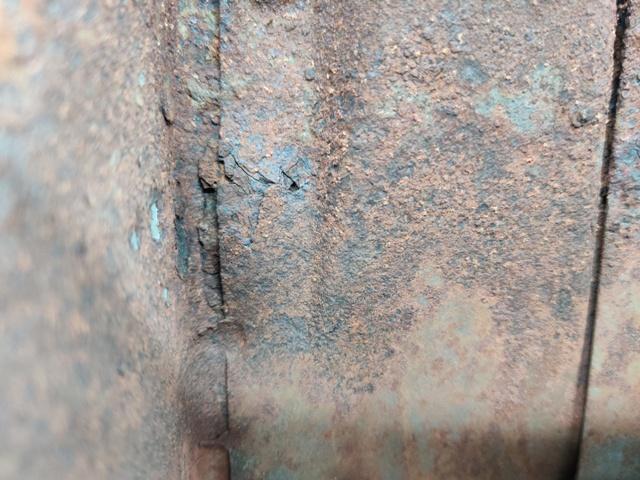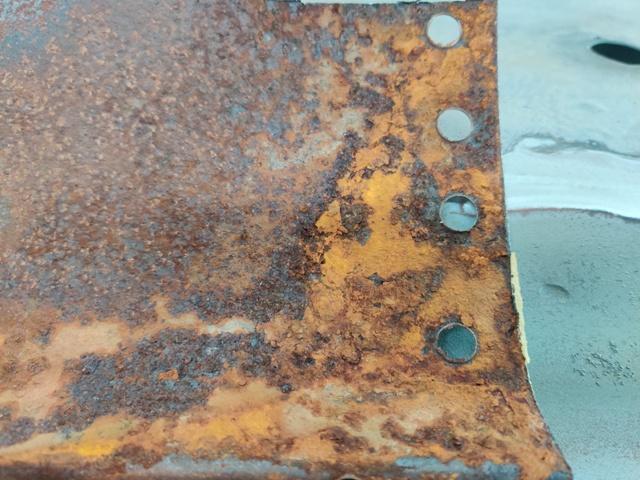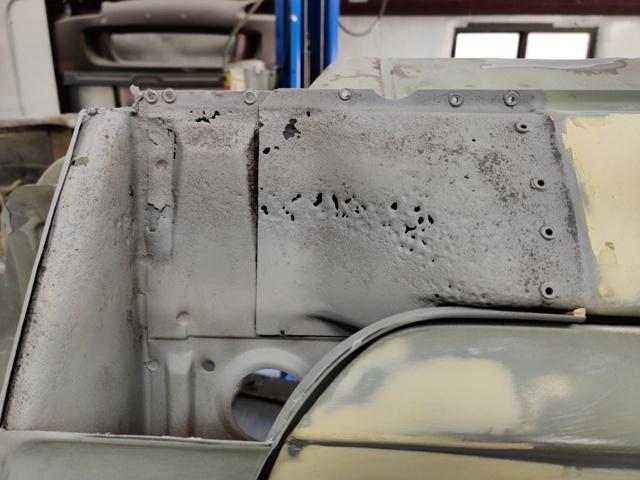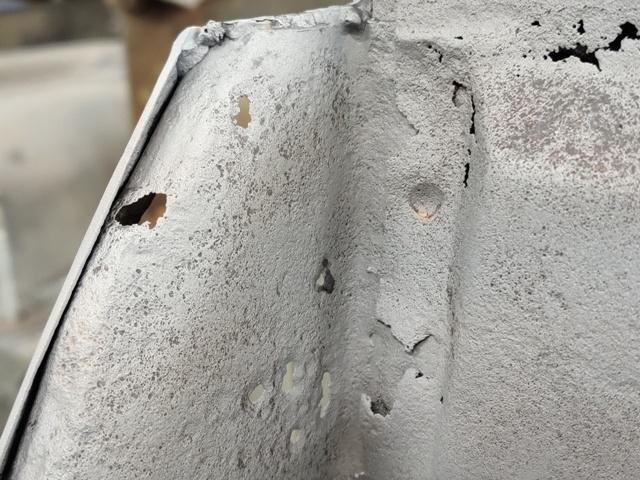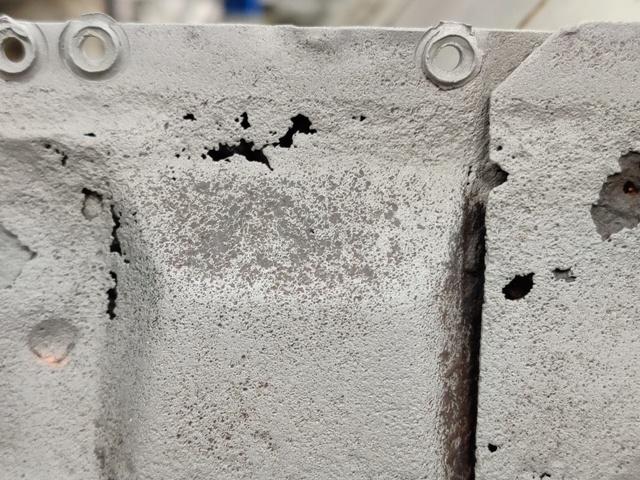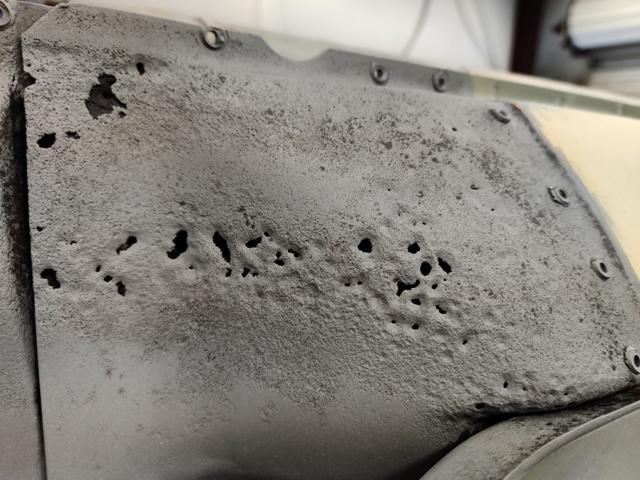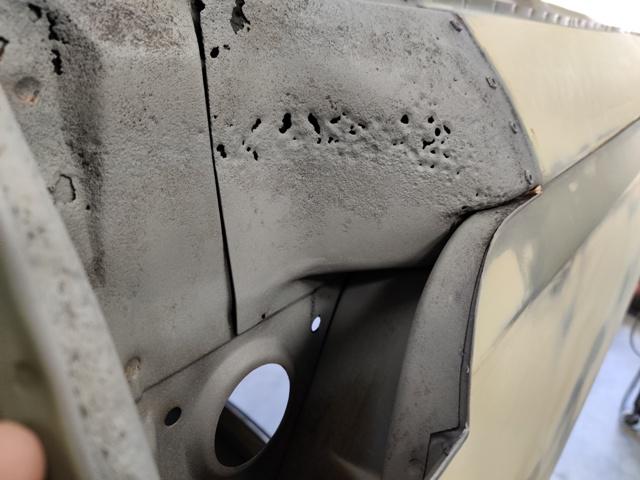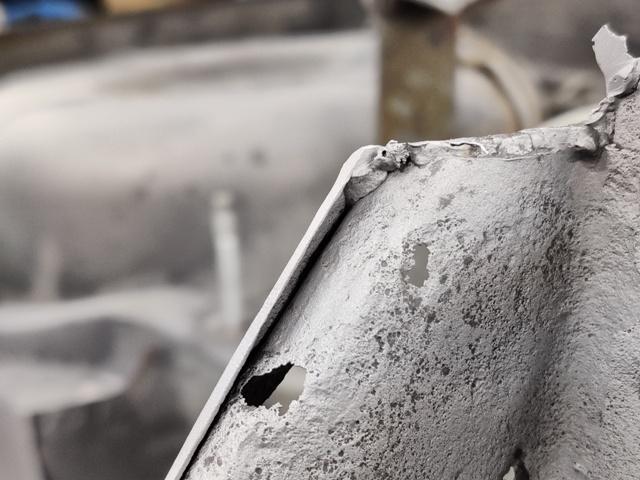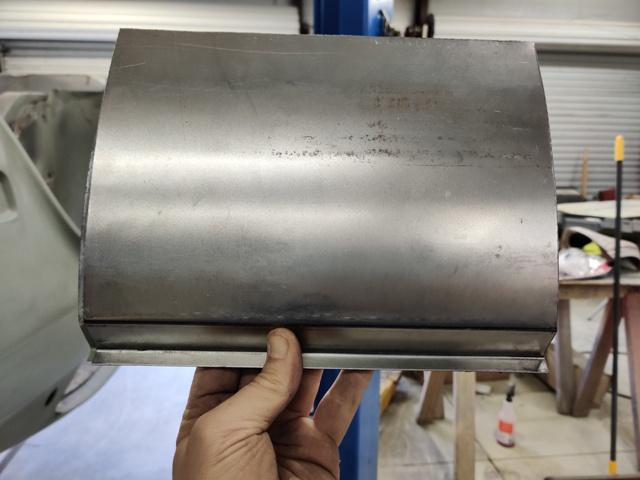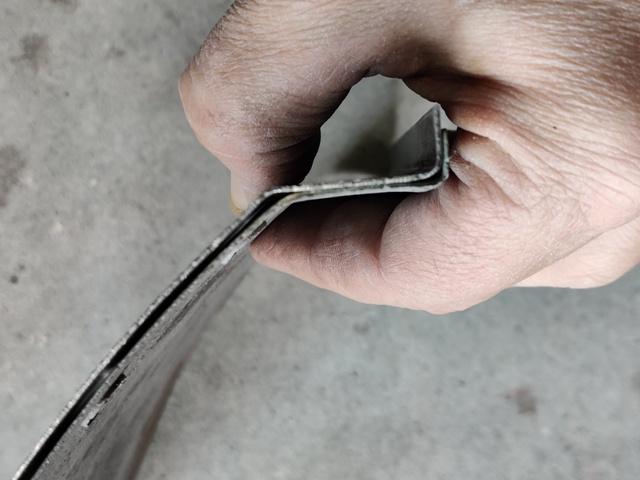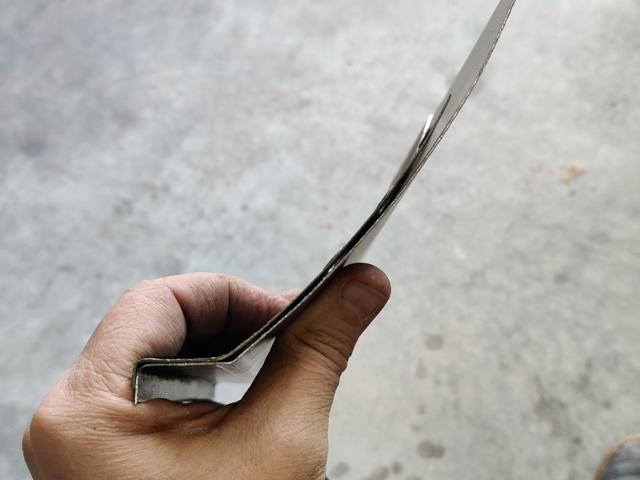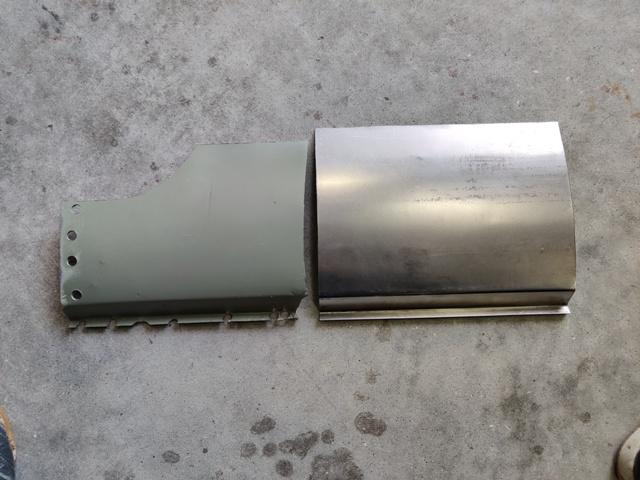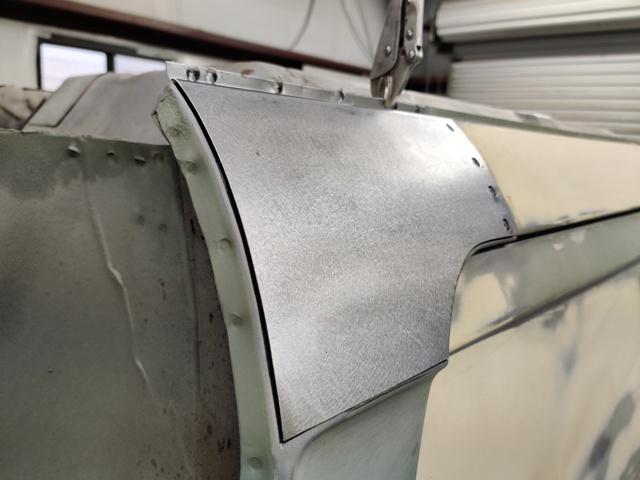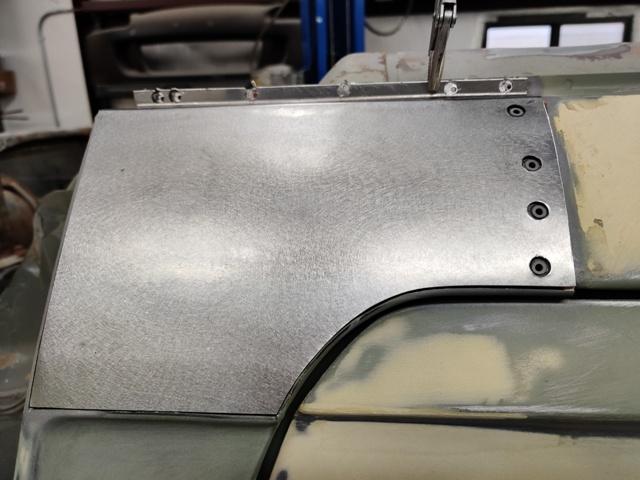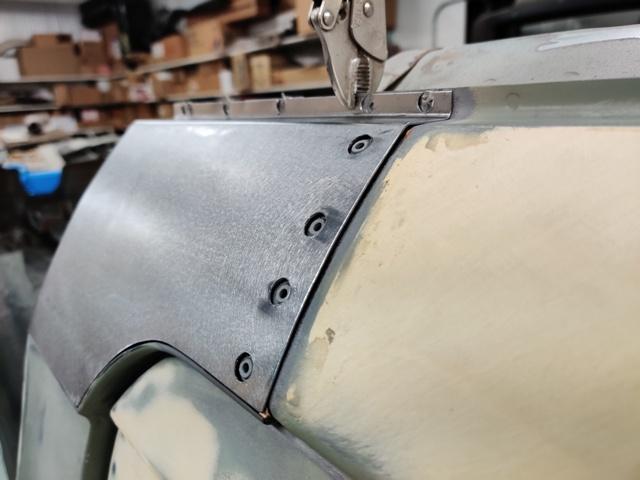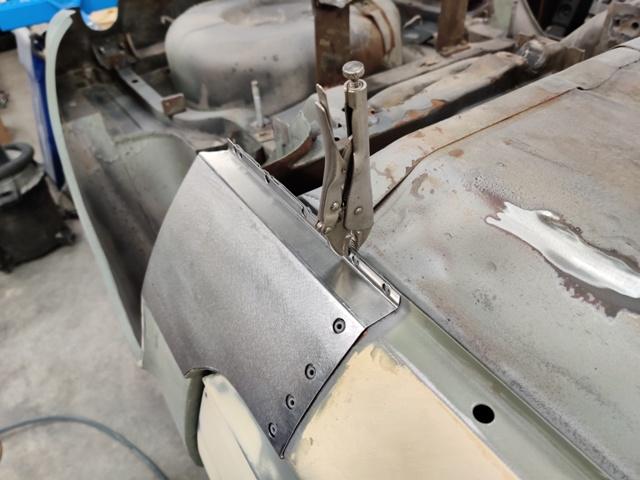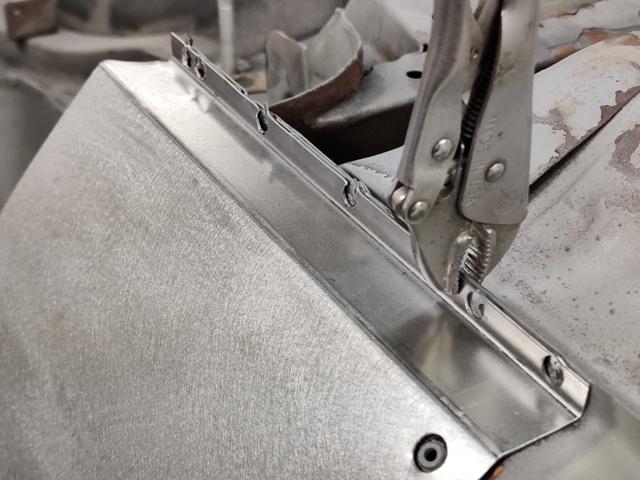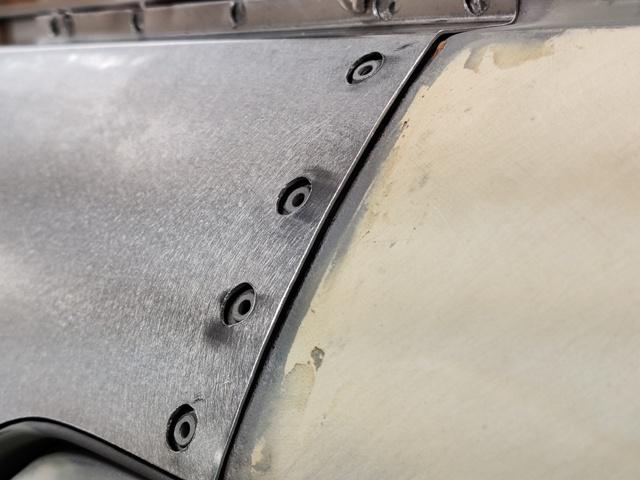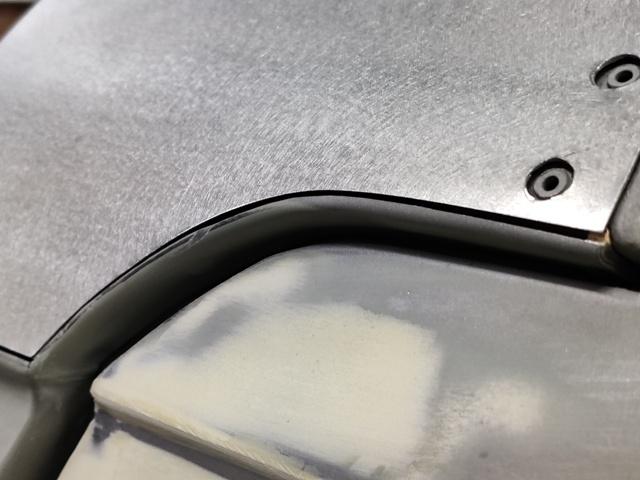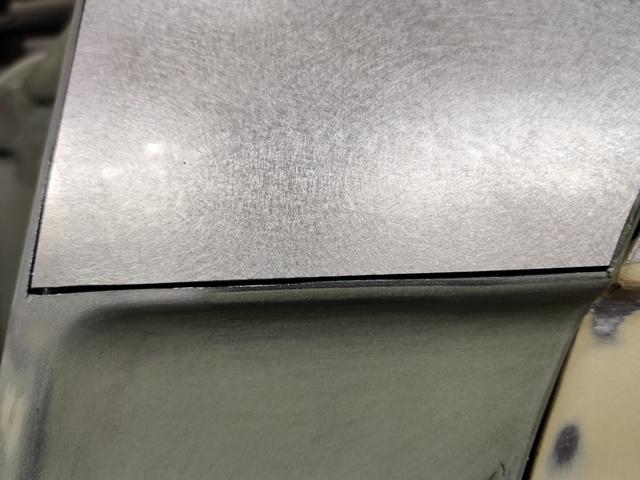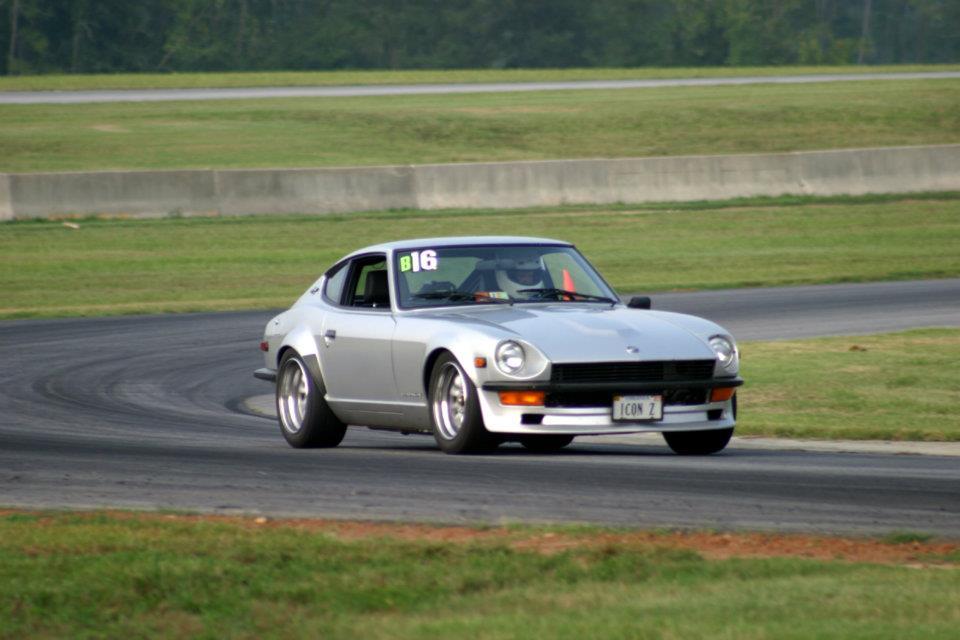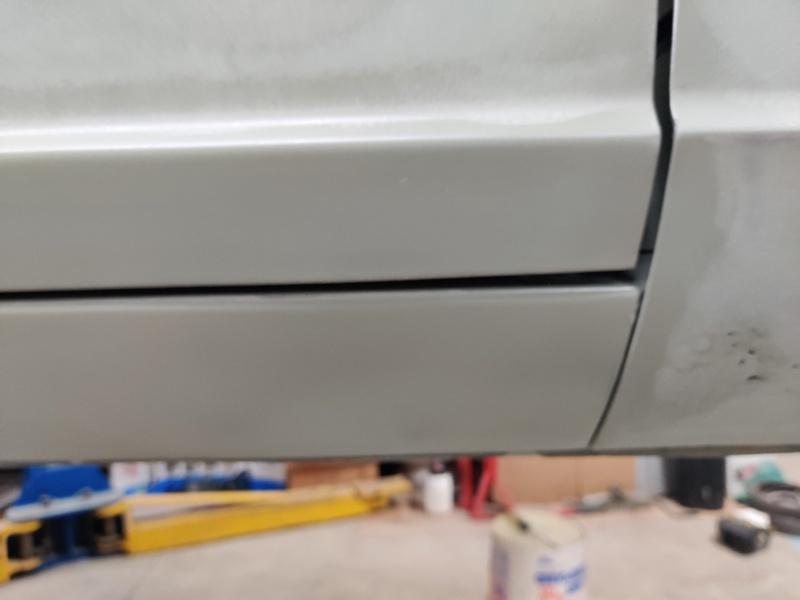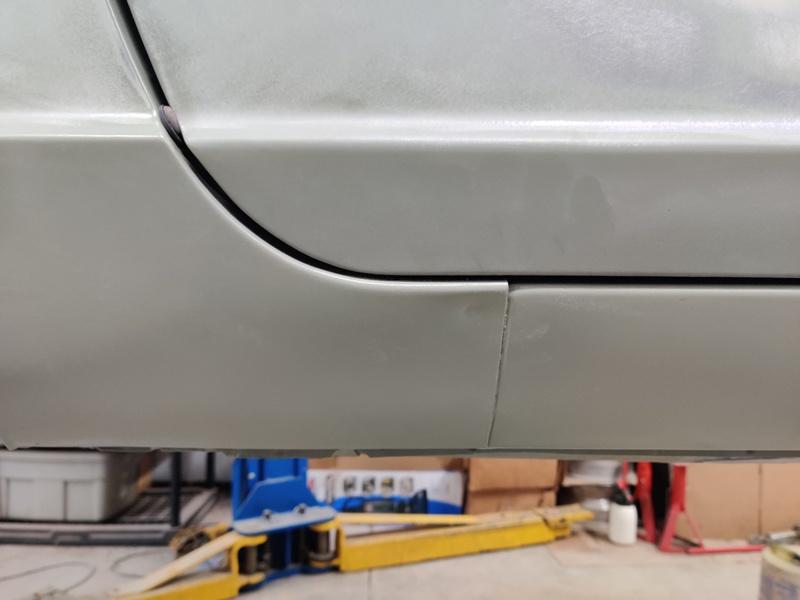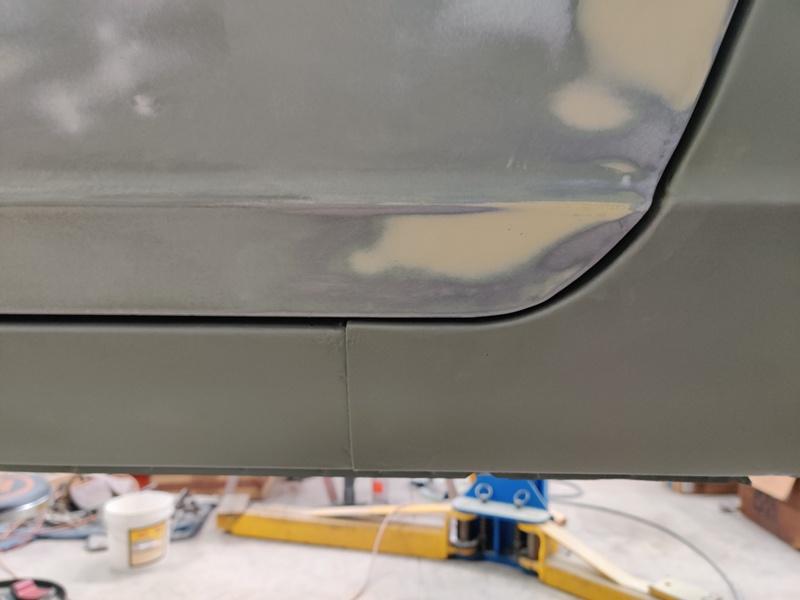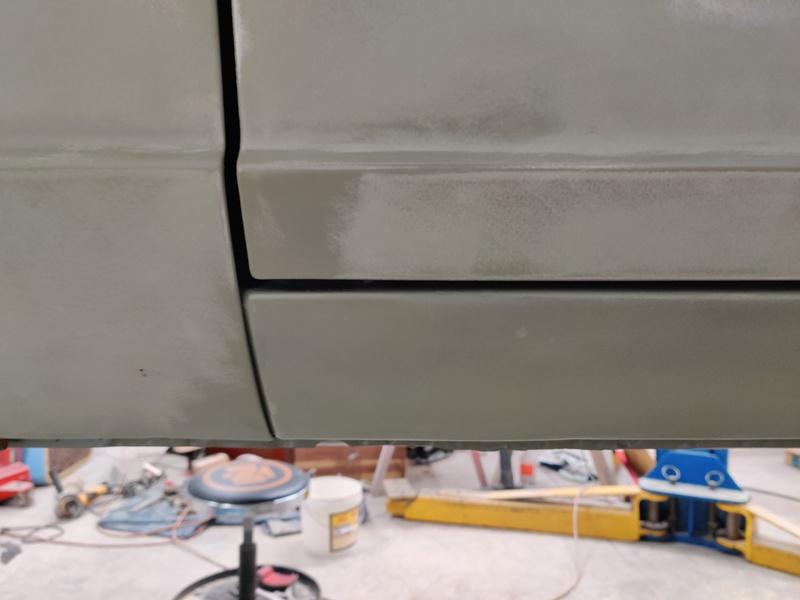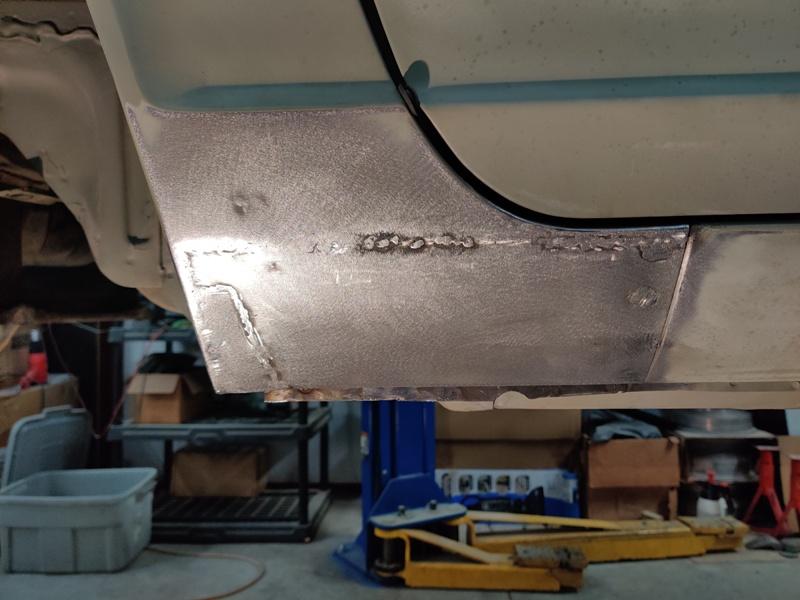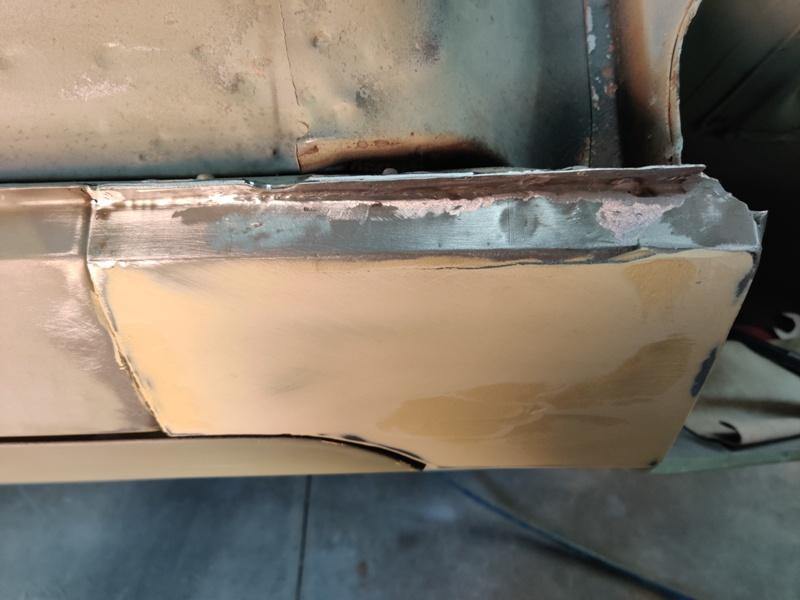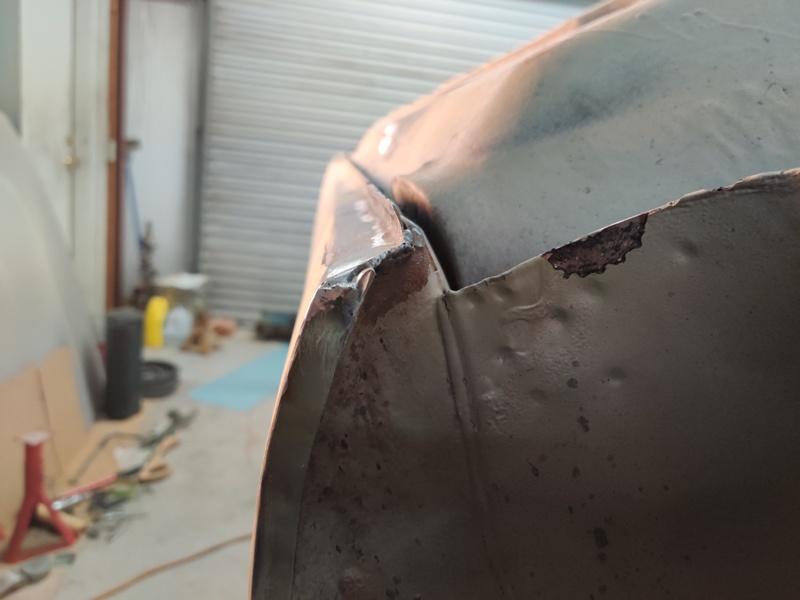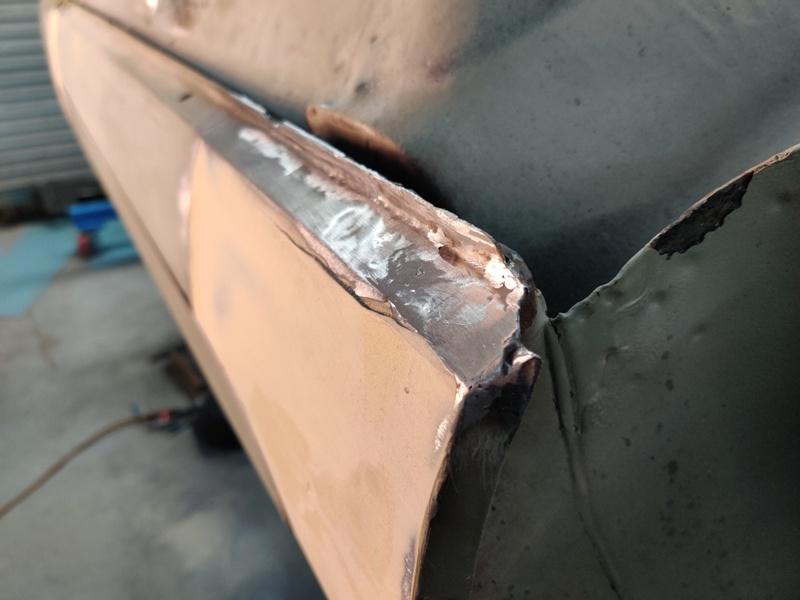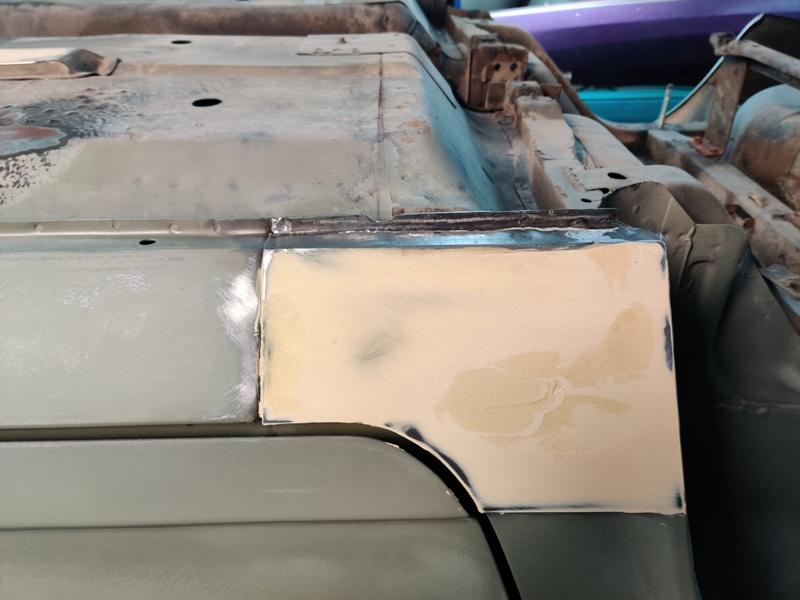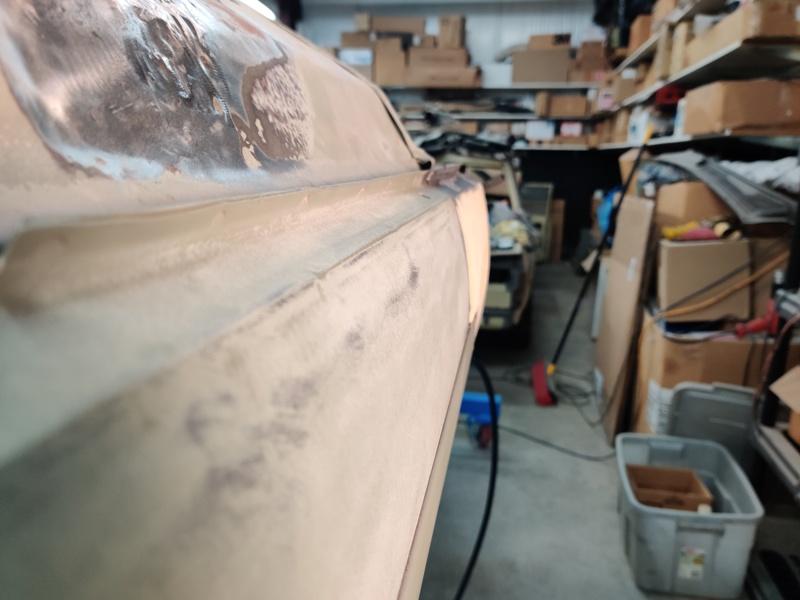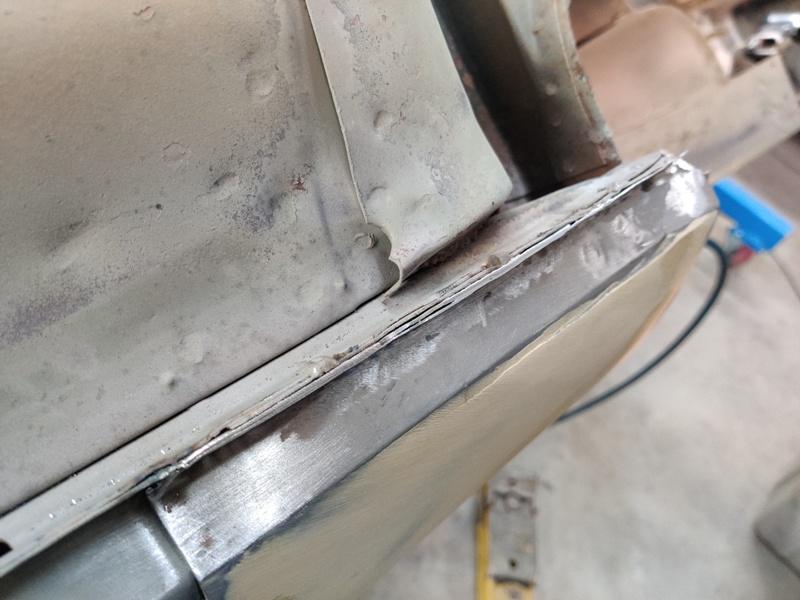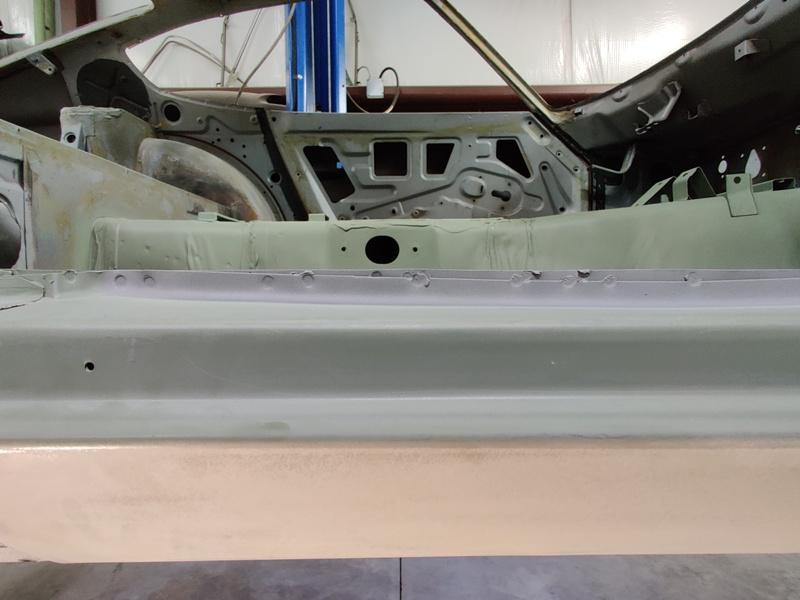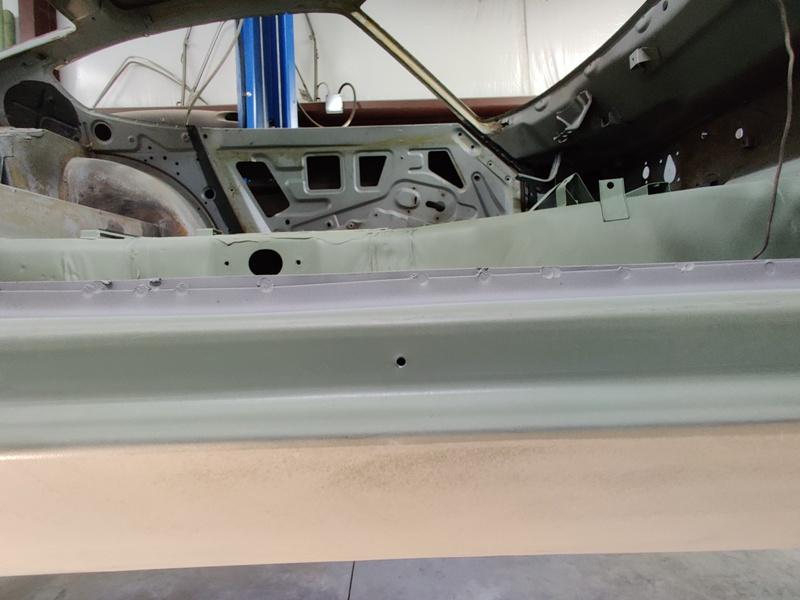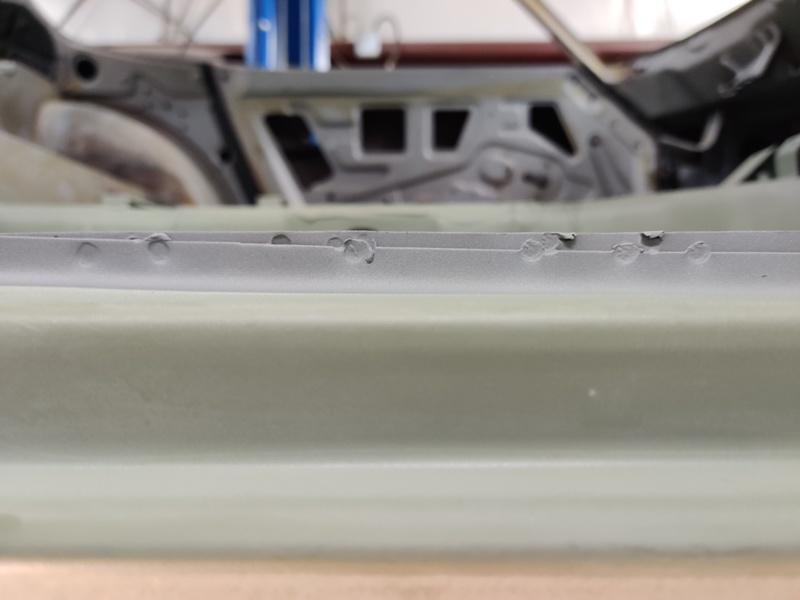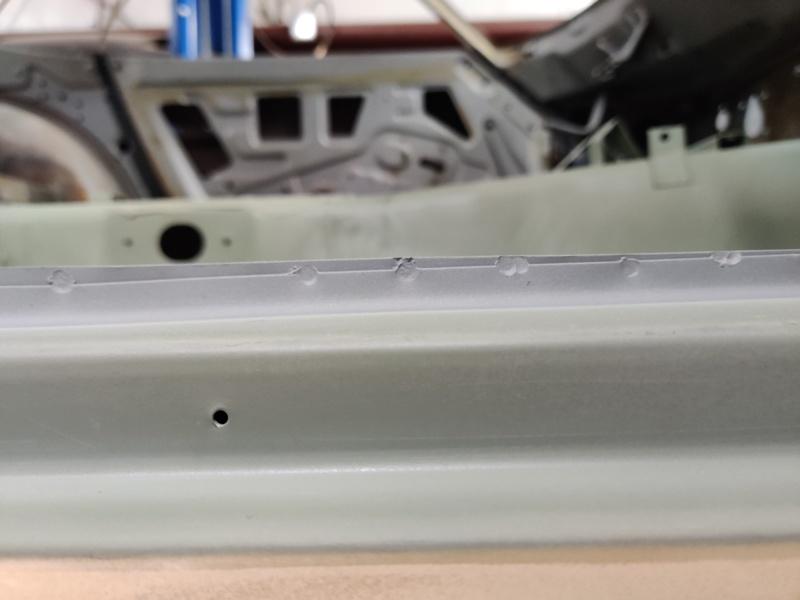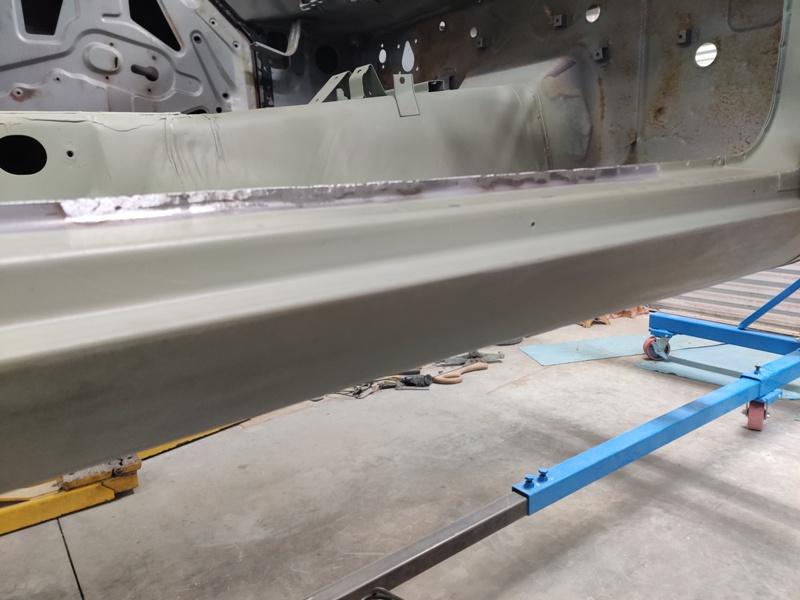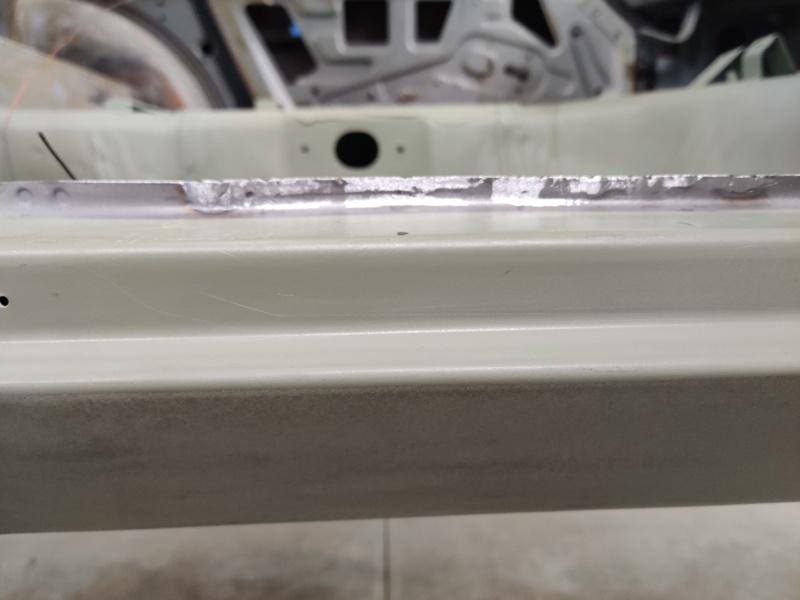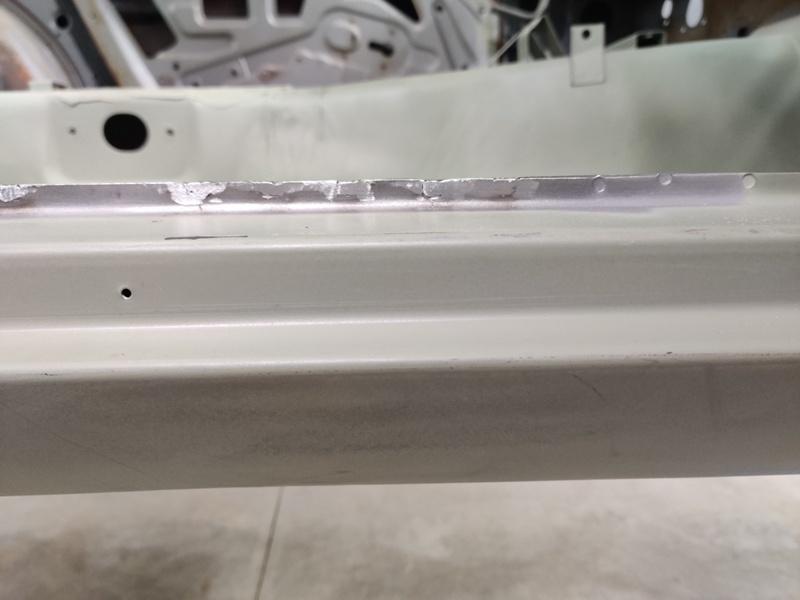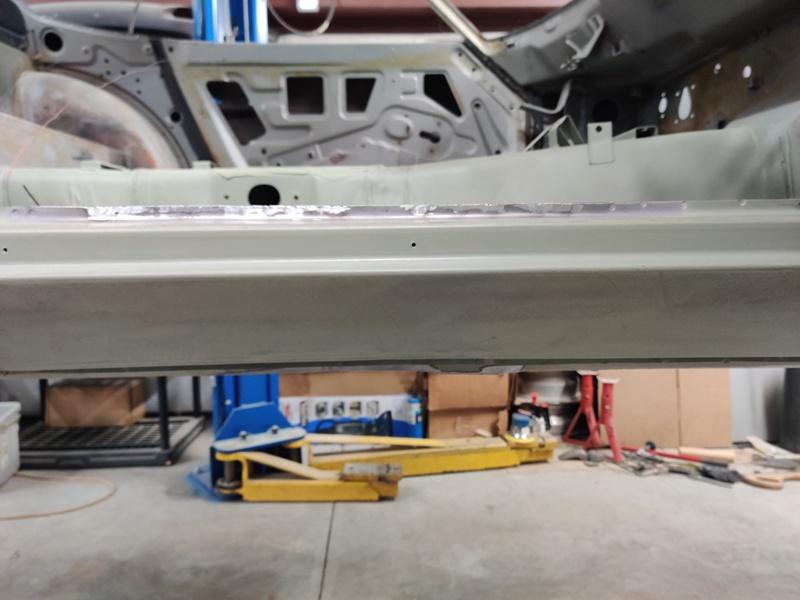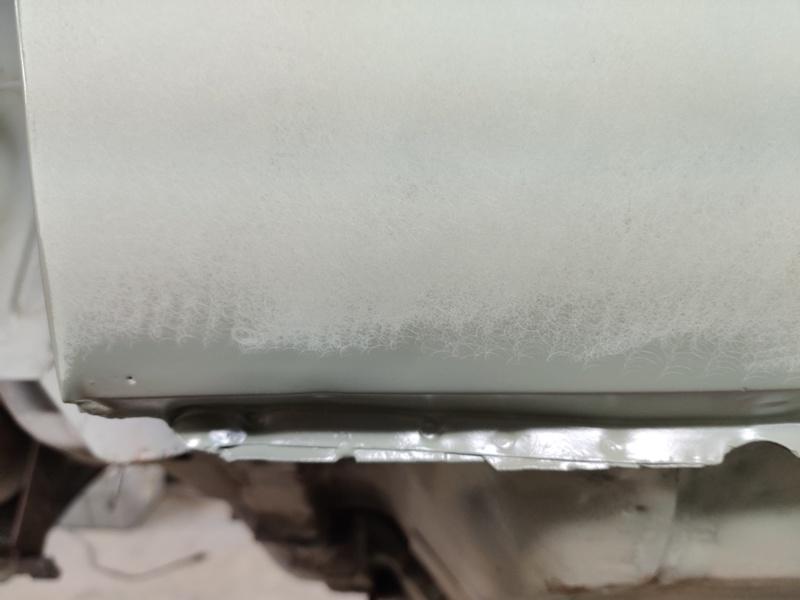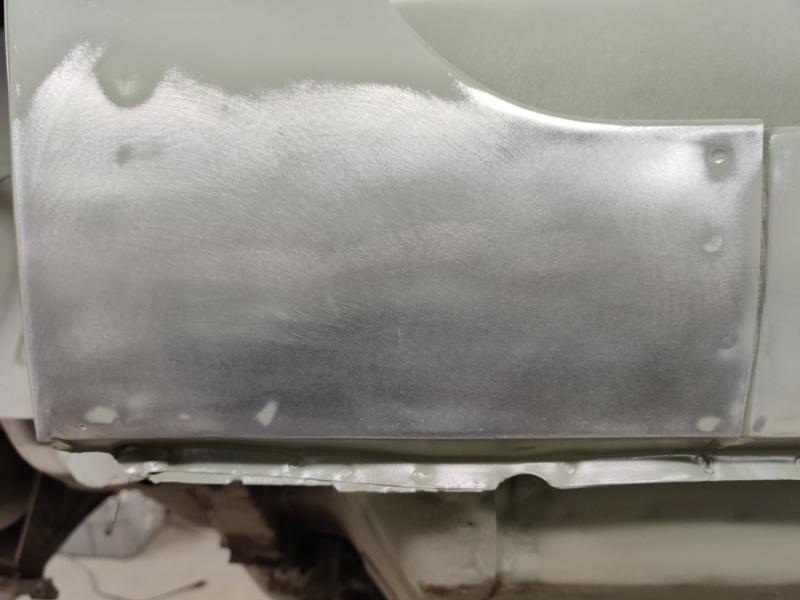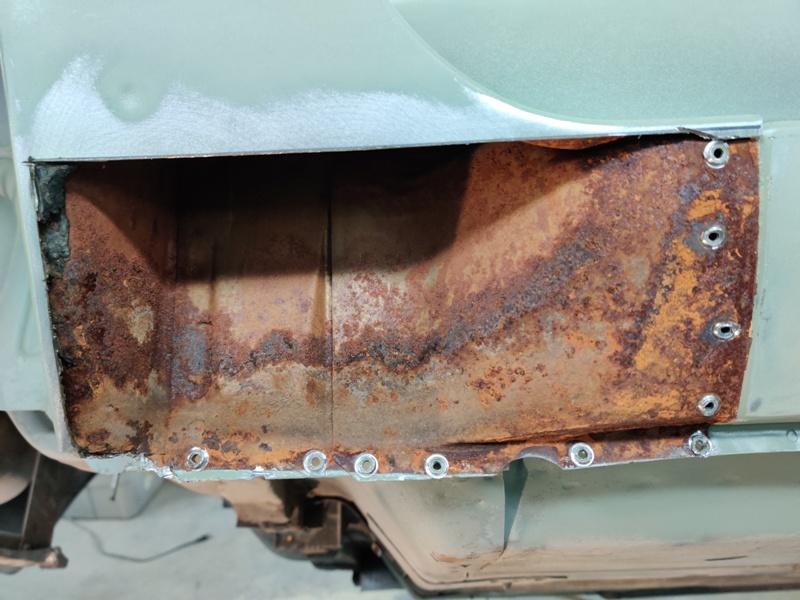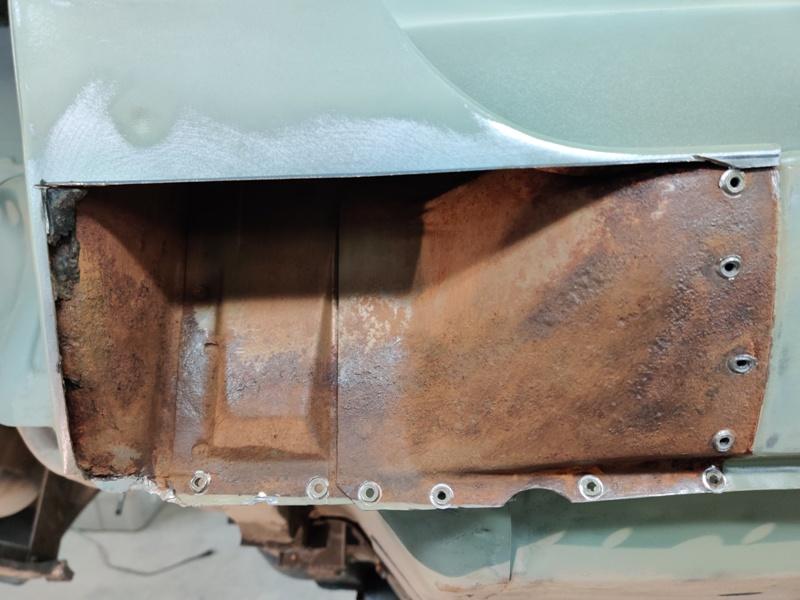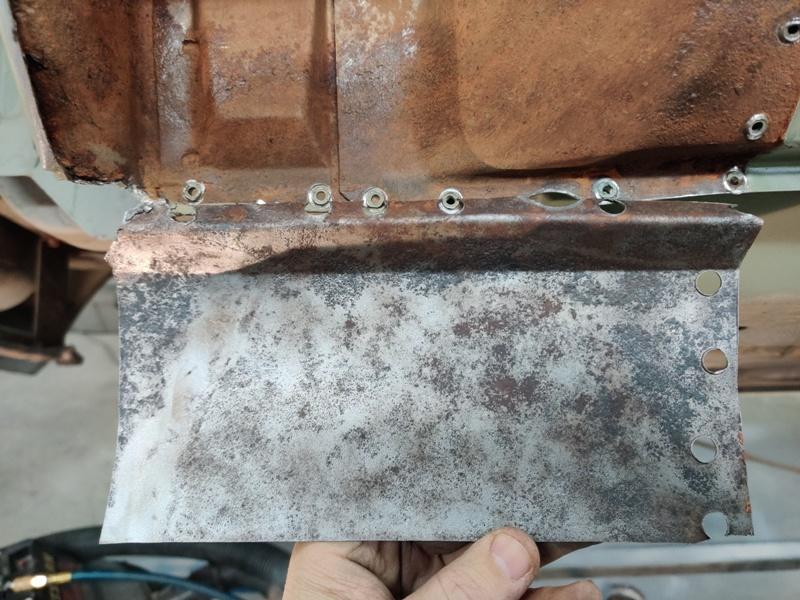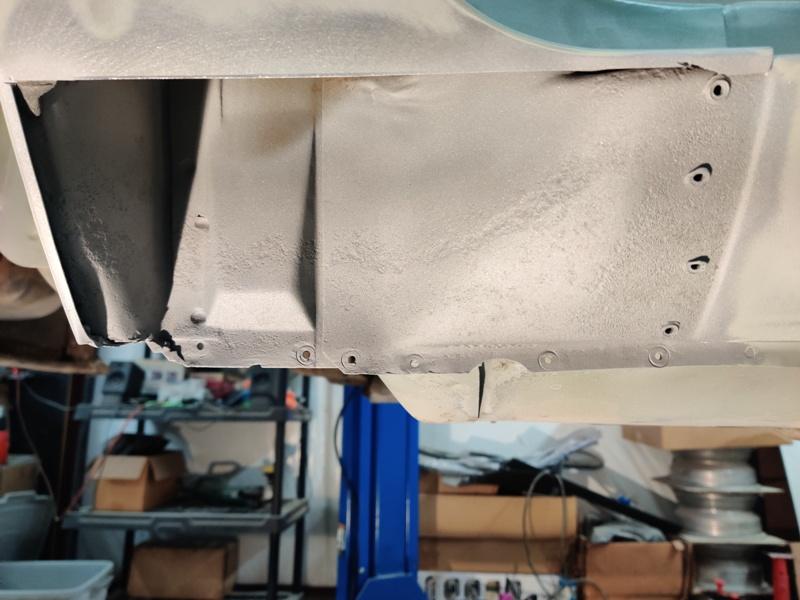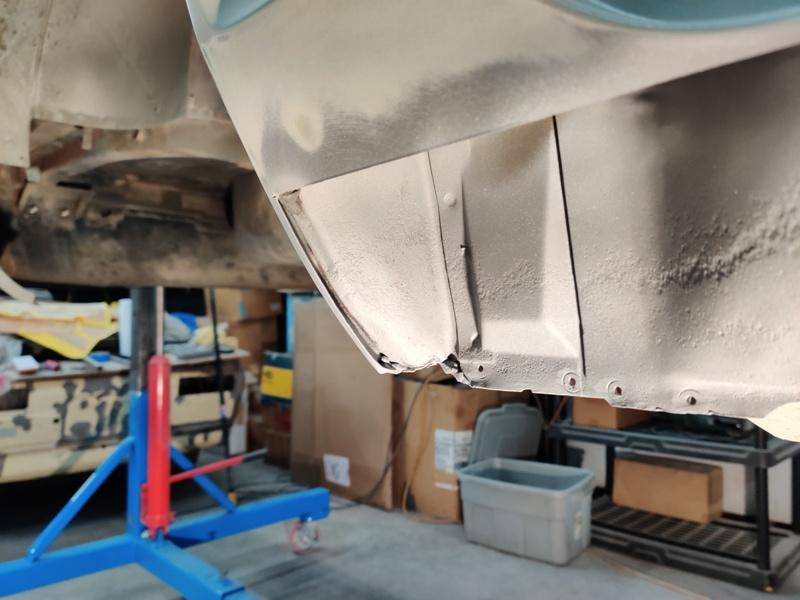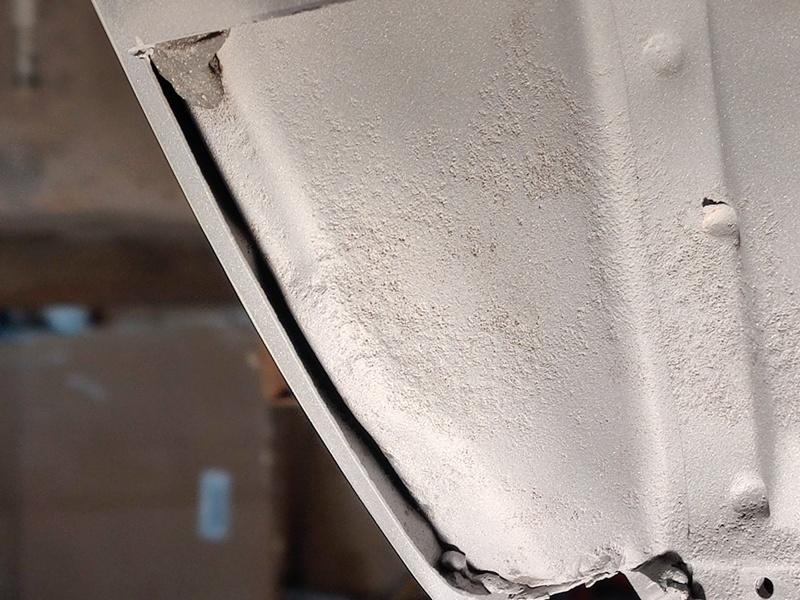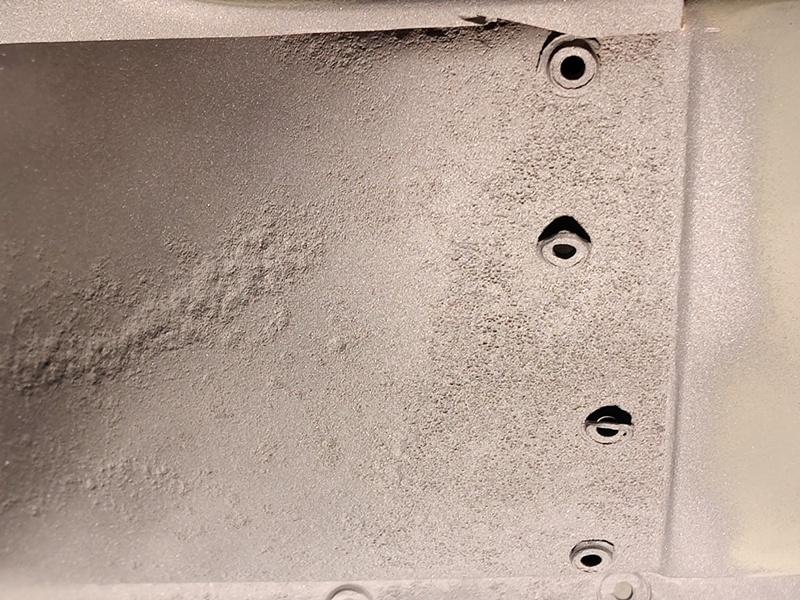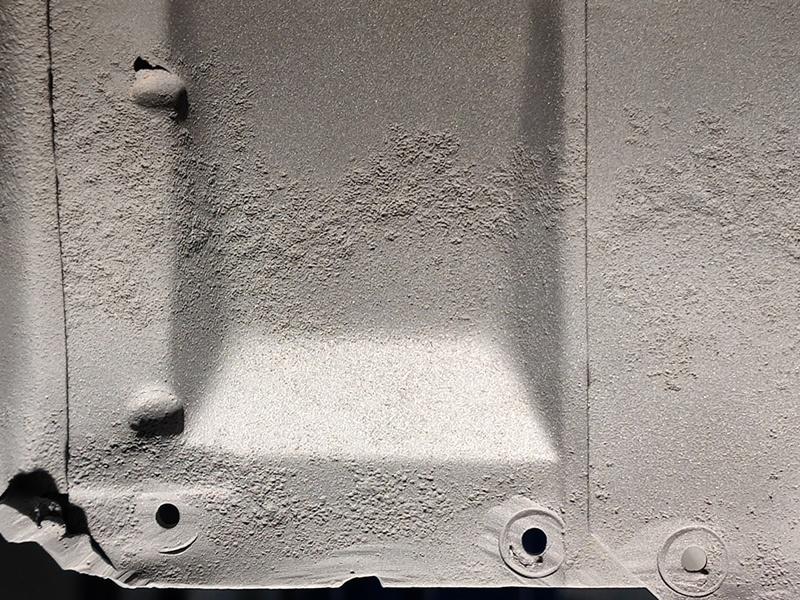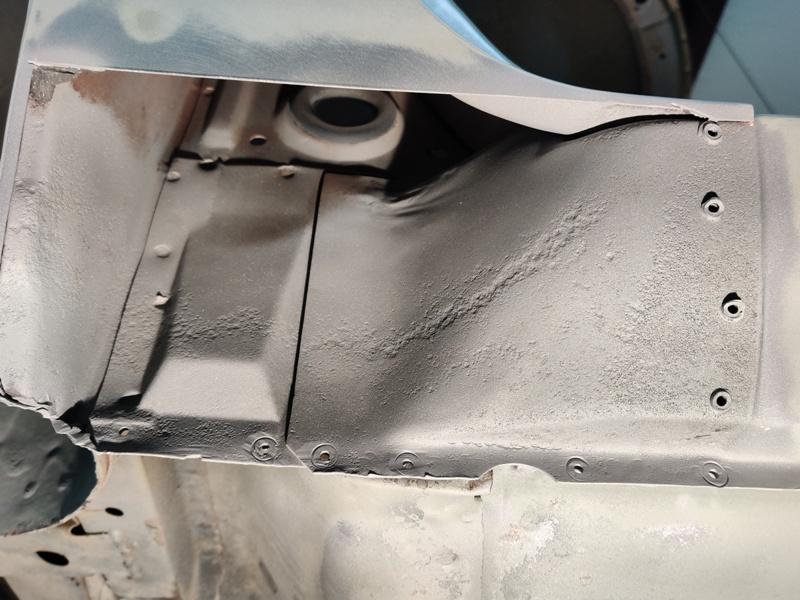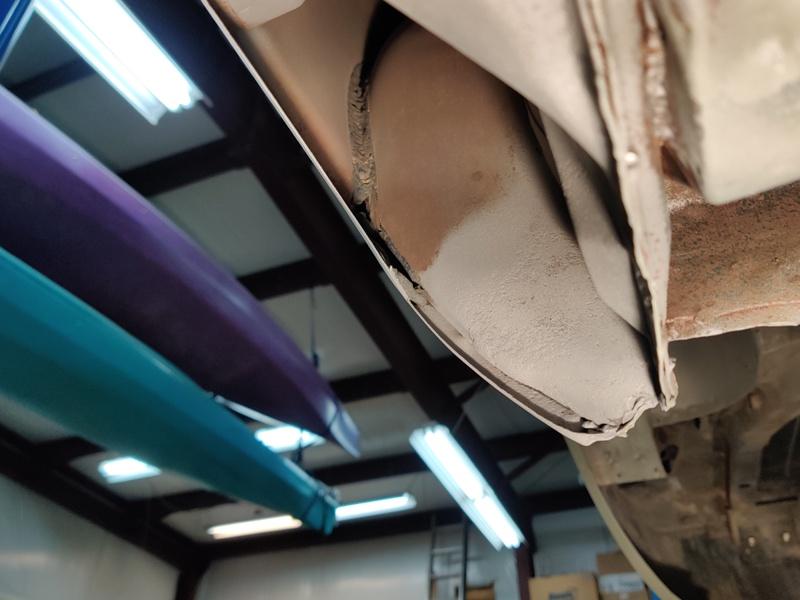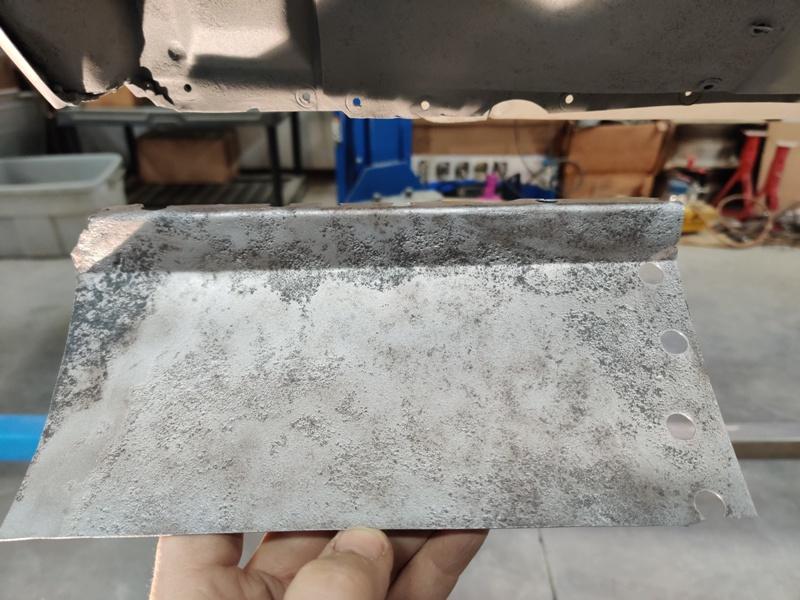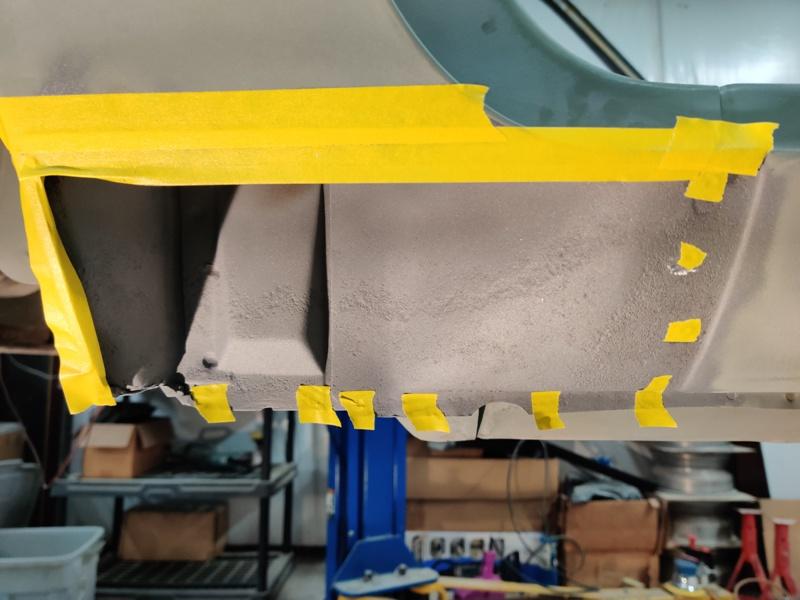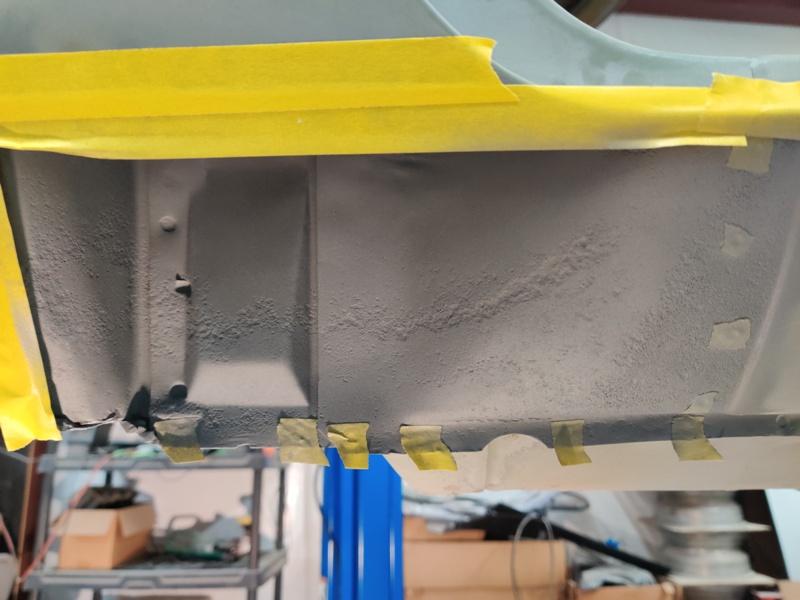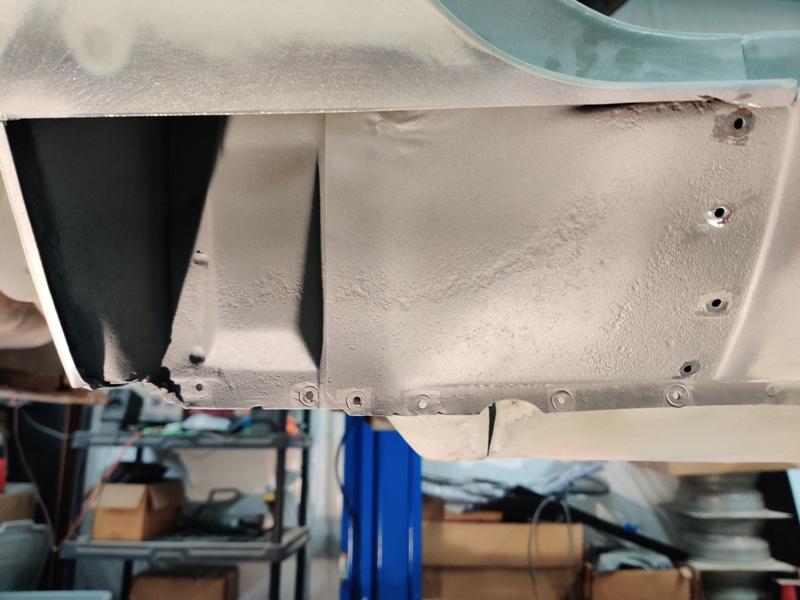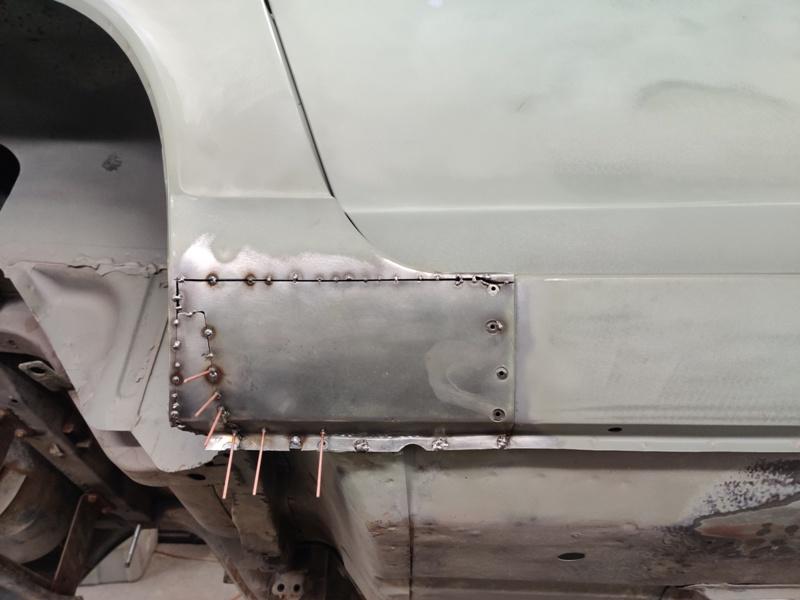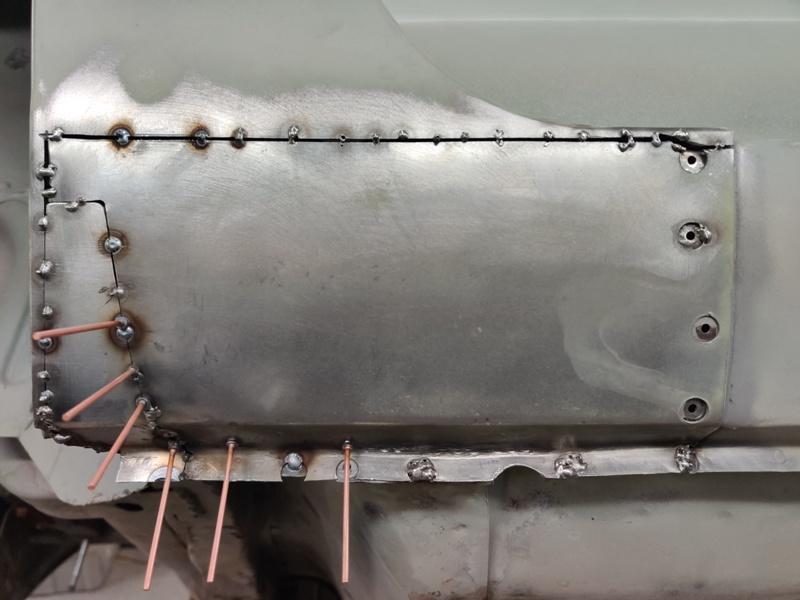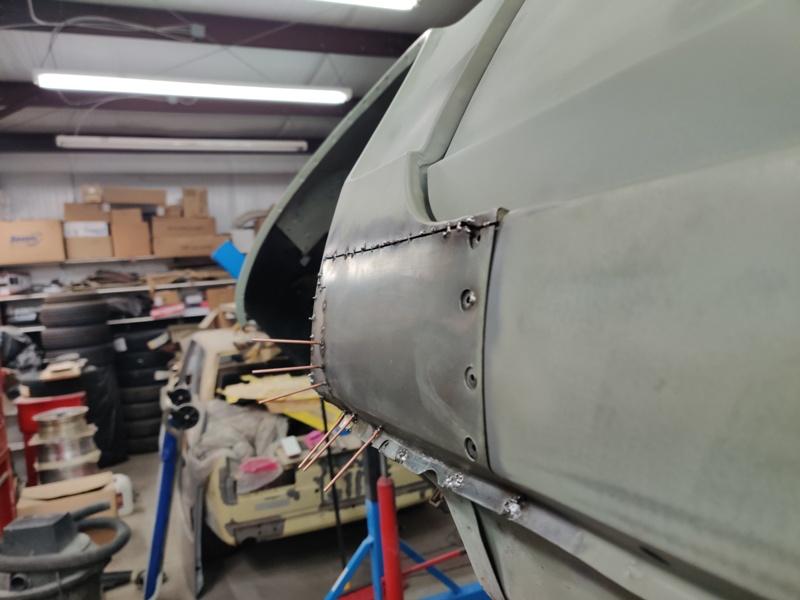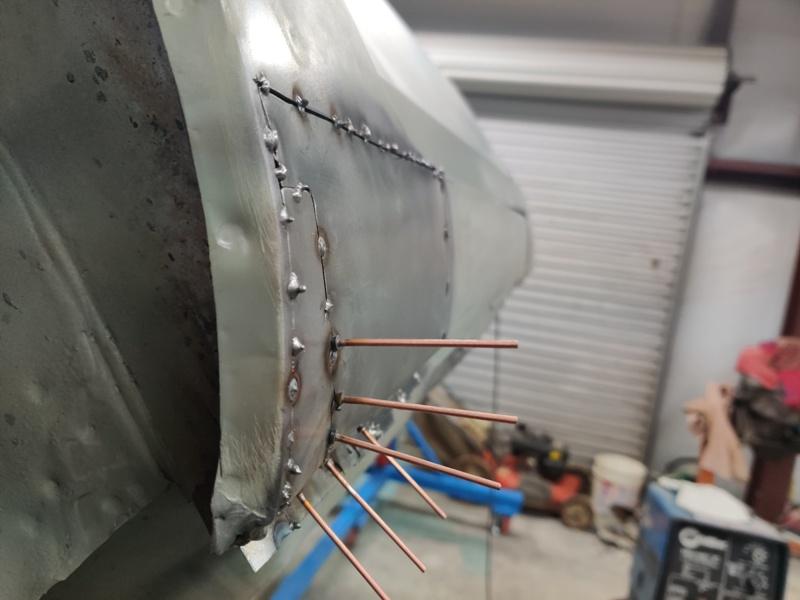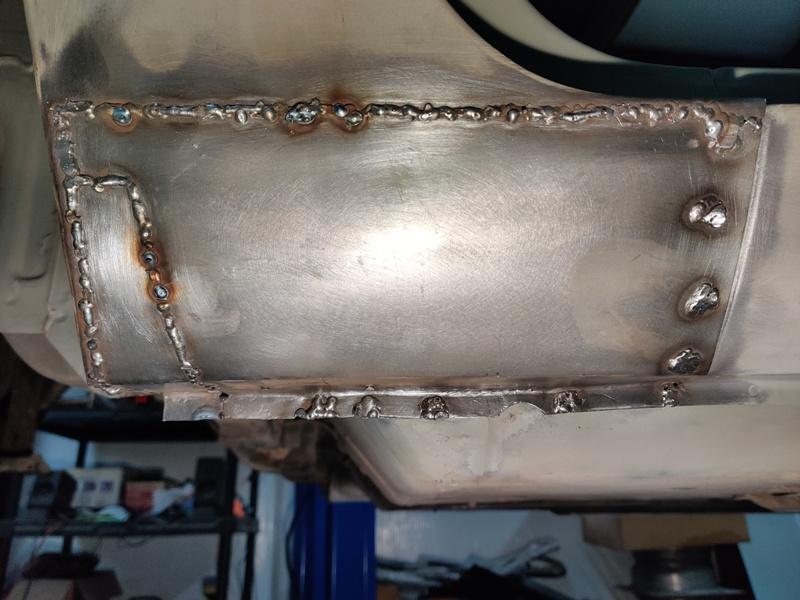Everything posted by inline6
-
HTP Quick Spot II spot welder - quick review
Great find. Thanks for sharing!
-
HTP Quick Spot II spot welder - quick review
Yeah... definitely getting that sense at this point.
-
HTP Quick Spot II spot welder - quick review
Not sure what to make of y'all's info. I am pretty ignorant about this subject. Also, I notice that the "same" unit has a very different label in the Youtube video previously referenced: So, 2.5kVA? What does Sn stand for? Another reason I'd like to understand this better is so I could compare this unit to this one, for example: https://www.harborfreight.com/240v-spot-welder-61206.html So, $160 vs. $649... And the cheap one has 2.5 kVA in the specs. Not sure any of the labels are going to be trustworthy? Is inverter technology anything to warrant discussing?
-
HTP Quick Spot II spot welder - quick review
Hmmm. So, I guess that means the standard rating is 1.6 kVA, but perhaps the capacitive discharge feature may make it punch above it's rating in real world application? Maybe I should test some thicker samples
-
HTP Quick Spot II spot welder - quick review
I think I missed the difference here the first time I read your comment, Hoover. So, my spot welder is actually putting out 15kVA not 1.5kVA (or 1.6kVA)... That is what your math shows. Namerow, you agree with this math?
-
71 240z restoration build thread
Hi everyone, I have been adding to my restoration/build thread over in the build thread forum area, and thought I'd post a link in the general discussion area in case anyone visiting here would be interested, but maybe would not necessarily see it otherwise. I hope to be adding some more video soon, but I have a bunch of picturesa and pretty regularly provide updates. You'll find details showing tear down, body work, mechanical work and reassembly as I go. I am targeting end of July this year for completion (probably wildly optimistic!). The car is a 1971, which spent working life in Arizona, and another 25 years in a garage in Colorado. It's getting a rotisserie restoration, along with some minor engine mods, aftermarket wheels, and a Z story header an exhaust system. Check it out if you like restoration work - here is the link to the thread: Restoration of BringaTrailer 240z - HLS30-35883 Garrett
-
Restoration of BringaTrailer 240z - HLS30-35883
Thanks! I will work on the dog leg areas first and then see where I land with door gaps. I don't think it would be much work to stitch some metal on the few inches of the bottom, front edge of the door, but it will likely cause at least a little distortion. May leave it alone. I didn't want to take off the lower corner of the driver quarter panel - I just kept looking at it and trying to convince myself it wasn't worth the extra effort. I examined it closely and contemplated... Car is upside down in these pics. In the first pic, I am looking at distortion in the area where the quarter panel spot welds to the rocker. These outward points or "dents" are areas where the metal is super thin and being pushed outward by the expansion caused by corrosion. Seeing these little pin holes all the way through the metal, I know that the corrosion on the other side is substantial enough to be breaking through. Especially, on the bottom flat area, any surface repair here would be short lived if water gets in again. Because I want to cut and modify the dog leg curve to improve the fit with the bottom corner of the door, I went ahead marked out where to cut and started cutting and drilling out spot welds. Opening up the panel revealed quite the mess: Unlike the passenger side, the corrosion on this side damaged some of the other, inner panels. Once again, I employed the sandblaster to remove the rust. For this side, the panels are more damaged, lots of holes in the back of the rocker panel and a few holes in the inner wheel well panel: Using the old panel as a guide, I cut a new panel from a flat sheet, and used some 1" X 1" square tubes and my vise to make the 90 degree bend for the weld flange. Then I marked off a line locating the ~ 45 degree bend and used a piece of aluminum channel (it has a really sharp corner) to replicate the factory bend radius. Some hand bending of the rest of the panel (clamping the panel in between a 2 X 4 and my bench surface) to make several slight bends... to replicate the shallow curve...) Getting the distance correct between the 90 degree and 45 degree bends is the hard part. I am happy with this: Once in the correct shape, I used the old one again as a template to locate holes to match the spot weld cut outs. Then I used a 4 1/2" grinder with a flap wheel to sand the edges of the panel to fit the opening on the car. Even with just one vise grip holding it on, the fit is very close. I am very happy with how this turned out. However, I can't close it up yet, as I have more sheet metal work to do to fix the inner panels.
-
Mint '71 240Z - More Fun Coming to BaT
Ah, I found the info you posted about this before. And dates beyond the 26th? AA, BB, CC, DD, etc. Cool.
-
Mint '71 240Z - More Fun Coming to BaT
@KatZ : "This PS30-00248 has a seat belt tag “ 4. 1970 “ , and the jack has a date stamp “ P. D. H “ ( means 1970 , April , 8th ) . I would like to see the jack of the BAT car much closer , I see “ P “ on the left , but it is not clearly seen , so I will wait until I get the clear shot." Using letters for dates is interesting... I never knew about that. How does the stamping indicate a day in the month after the 26th? How does the 16th letter in the alphabet get assigned to 1970?
-
Bodywork Issues
@BoldUlysses: What paint (manufacturer of the 901 Silver) did you go with? I tried asking for Glasurit/BASF/Limco, and they had no formula/code for it.
-
Mint '71 240Z - More Fun Coming to BaT
Oh man... the latest pictures of the carpet, aftermarket floor mat, and jute padding are gold. More pics saved to hard drive.
-
901 Silver/Grey Metallic. Not available in Glasurit?
So, I just got back from the local auto body supply place - they carry various brands including BASF/Limco/Glasurit. I asked for Nissan 901 silver, and the guy looked up the code and found nothing available from Glasurit in the 55 Line, and nothing in the other BASF products. I found this online tool, and I get only 90 Line, which is water based. https://coloronline.glasurit.com/index.php?language=8 I think that is incompatible with all my Glasurit stuff... which I have on hand. I've got a lot of money invested in Glasurit primers, and clear coat (I did some work on my BMW M3 as well). So, this is kind of upsetting. Now, I find it hard to believe that I can't get to a Glasurit version of 901. Any ideas? I searched and found these somewhat related threads: I also could take the tool doors to the auto body supply place and have them scan it with their Glasurit scanner, but the comment in the one thread says that silver (on the tool doors) isn't the same as what was used on the outside of the car, and that seems like it should be unnecessary. Anyone have experience with taking a code in one manufacturer's paint and crossing it with another manufacturer? My other Z is a really pretty silver, and looks like the one in the image for the link to the thread above to me, but it is a Toyota (1987 Supra) in Glasurit that I asked for over the counter in 1994. Here is a pic: Garrett
-
Bodywork Issues
Also, you should remove the chunks of body filler, or seam sealer or whatever it is (like above outer corner of right hinge) so that the hinges can be moved as needed. It looks like on the right one, that blob is keeping the hinge from moving up, which it sounds like it needs to, in order to make the panel sit level with the body on that side. Left one doesn't appear to be "clean" of residual stuff either, so that could be limiting it's movement. Inspect your weather strips and the flanges they are attached to. It could be that the flange the main seal is on is bent upward a bit in the left corner. That right hinge has an R on it, correct? Can't tell from the pic. The hinges are pretty beefy, so I doubt they are bent... or the issue. The mounting flanges on the hatch don't move around easily either. Doubt that is the problem. So, how is the fit at the bottom of the hatch? Left side to quarter panel, right side to quarter panel, and rear bottom edge from side to side? If the left front corner is elevated, the left rear should be elevated also.
-
Bodywork Issues
Yeah, need pics of the hatch to hinge attachment areas, and pics of the hinges with left and right marked. Also, pic with hatch adjusted as well as you can currently, with back edge at proper height would be helpful to determine how far out the whole thing is. Need to see gaps on all four sides...
-
Picked up a couple of new tools
Nice! Looks like very nice quality - both of them.
-
Mint '71 240Z - More Fun Coming to BaT
Interesting... Different than now. Thanks for that.
-
Restoration of BringaTrailer 240z - HLS30-35883
I find this rather interesting... and I am thinking about how to proceed. It seems that the panel gaps around the doors for this car are not ideal. This is likely a 240z thing or more precisely a 240z of my 240z's vintage thing... but I think the panel gaps here need to be worked a bit to be improved. Front of passenger door, bottom door gap line: At the front, bottom corner, the door panel edge rises upward a bit, increasing the gap distance between the door and the rocker: Passenger side, where the quarter panel dog leg attaches to the rocker, the distance across the gap to the bottom edge of the door is noticeably narrower than the distance across the gap from the rocker panel to the door bottom edge. Also, the door gap is inconsistent along this radius at the bottom, back part of the door to the quarter panel. Driver side, where the quarter panel dog leg attaches to the rocker, the distance across the gap to the bottom edge of the door is noticeably narrower than the distance across the gap from the rocker panel to the door bottom edge. Also, the door gap is inconsistent along this radius at the bottom, back part of the door to the quarter panel. Front of driver door, bottom door gap line: At the front, bottom corner, the door panel edge rises upward a bit, increasing the gap distance between the door and the rocker: I believe I have a bit more door alignment to do with the driver side door, so that the gap distance for the front of the door is the same as the gap distance on the bottom of the door. However, I also think I will be adding a bit of weld bead to the bottom front edge of both doors and shaping the added metal to eliminate this issue. For the quarter panel areas, I've already started doing minor surgery in the corner of the dog legs to improve door gap in that radius. This is visible in recent posts of the passenger side work.
-
Mint '71 240Z - More Fun Coming to BaT
I hear ya, but something has changed then, right? I mean, now, a new car doesn't take as long to get to the dealerships, but it could sit for months without selling. A new car made in 5/2019 that sits on the lot and doesn't sell until yesterday, is still a 2019 model. Period. Was it really different back then, such that when it sold, that is the year the car became? Doesn't make sense to me. I snagged a bunch of pictures of the paint marks in particular. The car I am currently restoring isn't as early a VIN, but hey, these are some great reference pics.
-
Mint '71 240Z - More Fun Coming to BaT
Never have understood the some cars with date stamps prior to 9/1970 are 71's. Can someone explain it? 5/1970 is a 1970 car... it's gotta be. Interesting how they used eBay to drum up buzz for the Bring a Trailer auction. Violates their rules for sure and I'm sure will be taken down. What a reference for paint markings! Really astounding - this car. Never seen anything like it.
-
Restoration of BringaTrailer 240z - HLS30-35883
Thanks! Best I could do with the Mig and grinding. Maybe I'll be able to do this kind of thing better with the Tig in the future. And here is where having the car on a rotisserie is so nice! Still body filler art involved with making things straight. Much work work to do... Sighting down the body line, it is pretty straight. Next up (second pic) is to fix the floor panel where it wraps around and didn't get welded to the inner rocker right: More body filler work is ongoing. I hope to put a bit more epoxy primer on the body of the car tonight.
-
Restoration of BringaTrailer 240z - HLS30-35883
Work to straighten out the misaligned rocker panel (at the factory) has begun. In addition to the problem I already showed pictures of, the top of the rocker panel had some misalignment as well. The outer panel was noticeably low along the top edge, but only for the center portion of the rocker panel. This caused a dip in the top surface that the aluminum threshold goes over top of: You can even see where the spot welder completely missed in attempting to join the inner and outer panels. Seems the workers at the factory had to adjust the welder downward to hit the outer panel, and even then, they could only pick up the top edge. I didn't show how I corrected it, but I just drilled out the spot welds, then used the stud welder to put some pins on the weld flange, and then used a crow bar and piece of plate to protect the top surface of the rocker, while prying up on the pins. This allowed me to put enough lifting force on the weld flange to raise the low area of the rocker. I then welded, with my Mig, the holes left from cutting out the factory spot welds, and ground everything flat again with the surface of the outer panel's weld flange: It's not perfect, but it is much better. Metal work like this is a big time suck. Lots of tedious grinding of welds. I finished them off with my hand held belt sander. I hope to experiment with the spot welder I bought on this flange, but the electrodes may be too large in diameter to align well on this flange. We'll see. Next up was the part where the quarter panel folds over the rocker at the back. Interesting to see what is inside. After a light dressing with wire brush... and the outer panel piece receiving some attention in the glass bead cabinet: The sandblaster was again employed to remove corrosion and get to nice metal. Got several pictures while this area was seeing the light of day: Close ups showing pitting (light pitting, in my opinion): My first 240z was missing the entire dog leg corner (inner and outer). So nice to see this area in such nice condition. Pic showing up inside (bare metal from the factory and the seam sealer they used in the wheel arch). A few more minutes in the glass bead cabinet with the panel. The dark corner (upper left in pic) was pitted too much, so I made a section to replace that. Taping for application of weld thru primer. I've never used it before. It is kind of transparent (has been applied in second pic): Tape removed and outer panel tacking in progress with new fabricated piece also (bottom left) As the welding occurs, the panel wants to move around. I used the stud welder to yank on low areas, trying to keep alignment as best as I can as welding continues: Alignment is not bad. Lots of time involved with keeping alignment, tacking, and eventually grinding. I easily have more than 30 hours of time with fixing the rocker and removing and reapplying this panel. The end result of the main effort, to straighten the bottom of the rocker panel/quarter panel along the bottom of the car is "better". Sometimes I can't get things good enough to my liking. I've ground the welds in the last picture down and filled small voids etc. More pics will follow, but it's time to get out there and work on the car again. ?
-
Parts for Sale: 240Z hood, right fender, metal headlight housings
View Advert 240Z hood, right fender, metal headlight housings All parts are OEM and in very good condition. If you would like more pictures, I can get them for you. Hood: Came from a 1972 240z. Acquired in 1993 from a car in Virginia. Very straight, stored indoors since the mid 90's (Still Available): --> $300: Fender (from AZ/CO area): pics of the fender after sandblasting the lower corner. One or two pin holes and some very minor rust pitting, but otherwise this is very nice. A fender like this saves you lots of time on body work prep instead of one you have to section in new metal, do metal work, etc. --> $250 plus shipping ****SOLD Headlight housings (metal, both left and right from AZ/CO area), all threads are in excellent condition - nice - rust free: --> $80 each **** SOLD Advertiser inline6 Date 01/03/2020 Price $0.01 Category Parts for Sale
-
240z body parts for sale - Atlanta area
Bump: Hood sourced from VA in the 90's is still available: $300 Headlight housings (metal) are reduced to $80 each Fender still available: $250 Ask questions if you like and I can provide more pics as necessary.
-
Restoration of BringaTrailer 240z - HLS30-35883
I got the head gasket - 11044-27LX1. I measured it in several places and it is mostly .057 to .058". I found one spot in the gasket only area that was .056". Across firing rings bridging 2 cylinders (measured between several sets of cylinders), I get about .059". 1.42 mm thickness was claimed in the eBay listing, and that is close to .056". So, if this gasket doesn't compress more than .009" upon installation... (.056" minus .025" (pop up) = .031", minus .022" (min. piston to head) = .009" allowable crush) then this should work.
-
HTP Quick Spot II spot welder - quick review
Thanks for this info. Very informative. Here are the specs of the Quick Spot II for reference. I am not familiar with kVA. Can you tell me how you arrive at 1.6 kVA? I assume an equation of some sort and some of the following as parameters? Quick Spot II Specs Maximum Welding Current: 6000 Amps Welding Voltage: 2.5 Volts Max Electrode Pressure: 265 Lbs. Input Voltage: 220 Volts Input Amperage: 30 Amps Maximum Absorbed Power: 13 Kw Rated Power: 2.3 Kw @ 50% Spots/Hr: 180 (continuous mode, 20 gauge panels) Maximum Double-Sided Spot Welding Thickness: 14 gauge (.075") + 14 gauge (.075") Dimensions: 17" L x 4" W x 7" H Weight: 30 Lbs. Warranty: 1-Year




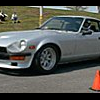
 Subscriber
Subscriber
